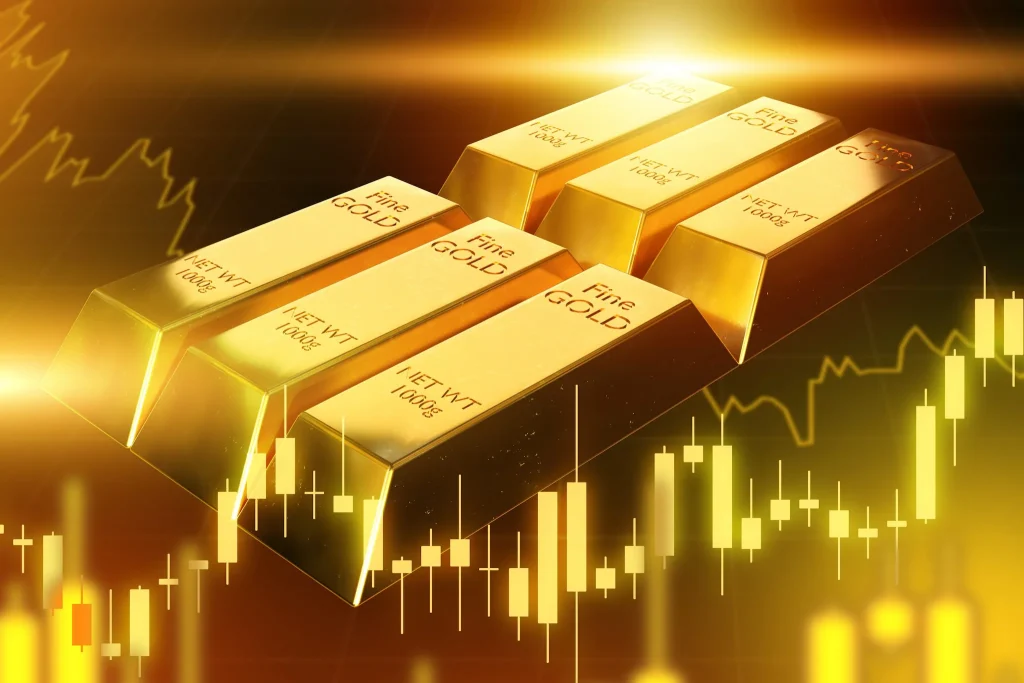Gold prices have surged beyond the $3,300 threshold, propelled by a weakening U.S. dollar and escalating trade tensions between the United States and China. The precious metal has now gained over 26% in 2025, solidifying its position as the top-performing commodity of the year.
At the heart of this rally lies growing geopolitical uncertainty. President Donald Trump’s administration has initiated a probe into imposing fresh tariffs on Chinese rare earth imports, adding fuel to an already tense trade standoff. In retaliation, Beijing has tightened its restrictions on the export of rare earth metals and magnets to the U.S., critical materials used in defense and high-tech industries.
These developments have caused the U.S. Dollar Index (USDX), which tracks the greenback’s performance against major currencies, to fall more than 4% in April alone—bringing its total losses for 2025 to over 8%. As a result, investors are increasingly turning to gold as a hedge against economic volatility and currency depreciation.
Bullish Momentum Lifts Gold to New Heights
Since the start of April, gold has climbed from $3,157.30 to surpass both the $3,200 and $3,300 benchmarks, continuing its steady climb that began in early January. With back-to-back monthly gains, gold has outpaced other top-performing commodities, including U.S. coffee, now relegated to second place.
In January, gold broke past the critical $2,800 resistance level and has sustained upward momentum ever since. By February, market sentiment remained firmly bullish, and March saw a continuation of this trend as the dollar weakened further.
By mid-April, the yellow metal had recorded a year-to-date gain of 27%, placing it squarely at the center of investor attention.
Analyst Insights and Future Outlook
Lukman Otunuga, a senior research analyst at FXTM, attributed gold’s impressive rally to multiple factors including dollar depreciation, market anxiety over tariff disputes, and growing fears of a global economic slowdown.
“Gold is supported by a weaker dollar, uncertainty around tariff announcements, and concerns about a potential global recession,” Otunuga said.
He further noted that once gold crosses $3,300, psychological trading dynamics may begin to influence price movements more heavily. “While optimistic investors may target $3,400 or even $3,500, any resolution in U.S.-China tensions or sudden bouts of profit-taking could trigger a temporary correction,” he warned.
Rare Earth Tariff Dispute Raises Alarms
On the geopolitical front, the Trump administration continues to intensify pressure on China. Late Tuesday, the President instructed his trade team to investigate new tariff measures in response to China’s latest moves.
China’s recent export curbs on rare earth metals have raised strategic concerns, particularly given the U.S.’s limited domestic production capacity. These minerals are essential for a wide array of industries, from smartphones to military weaponry. Without a reliable supply, the U.S. economy could face significant disruptions.
President Trump underscored these concerns, stating that “reliance on mineral imports from China poses risks to national security and defense readiness.” His remarks highlight growing apprehension within the administration over the potential long-term consequences of mineral dependency.
Safe-Haven Appeal Grows Stronger
As traditional markets remain volatile and global economic indicators show signs of slowing, gold’s status as a safe-haven asset continues to strengthen. The metal’s rise reflects investor anxiety not only about geopolitical risks but also about broader structural issues facing the global economy, including inflation and central bank policy uncertainty.
With tensions between Washington and Beijing showing no signs of easing, and the dollar under sustained pressure, market analysts predict that gold could continue its upward march in the coming weeks.
However, while some investors eye new highs beyond $3,400, others caution that any signs of diplomatic progress in the U.S.-China relationship or stronger-than-expected economic data from the U.S. could trigger short-term corrections in the gold market.
For now, the metal remains in the spotlight—drawing both cautious optimism and speculative fervor—as the global financial landscape continues to shift.












